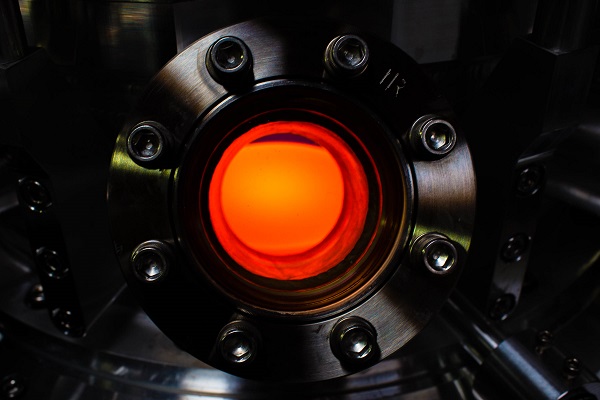|
|
IGDA: Lab-Grown Diamonds Poised for Upswing
Feb 11, 2019 8:39 AM
By Rapaport News
|
|
|

RAPAPORT... The lab-grown-diamond sector is enjoying a spike in awareness among US consumers and is starting to make headway in the engagement-ring market, according to a report by the International Grown Diamond Association (IGDA).
“Over the last two years, the anecdotal feedback from IGDA members has been that the bridal category is where they’ve had most success,” said Richard Garard, secretary-general of IGDA, which commissioned MVI Marketing to do the research. “The extensive survey conducted by MVI confirms this as well as corresponding consumer attitudes toward lab-grown diamonds, indicating the significance of the opportunity in bridal.”
The research, which is based on a September survey of 1,710 US respondents, found that 51% knew what synthetic diamonds were, up from 9% in 2010, with 68% stating they would consider buying a lab-grown-diamond engagement ring. Of millennials actively shopping for an engagement ring, 66% would contemplate buying a synthetic diamond, while 23% said they would definitely purchase one.
Responding to the rising interest, more jewelry retailers are carrying lines featuring lab-grown diamonds, with the likes of Helzberg Diamonds, J.C. Penney and Macy’s offering collections to their customers, the report noted. The quality and size of lab-grown diamonds held by jewelers typically mirrors their stock of mined diamonds, with 1-carat and larger, G- to H-color, VS2- to SI1-clarity stones being the sweet spot.
Consumers are most attracted to lab-grown due to their lower price levels, selling at a 20% to 40% discount compared to natural mined stones, according to the report. “It is the bigger/better-for-less message that is appearing to be most compelling for consumers,” the IGDA explained.
The group acknowledged that some prices had gone down, mostly in the smaller-size goods, but contended that prices were increasing for higher-quality, larger lab-grown diamonds suitable for bridal, since demand exceeds supply.
The report noted other factors underlying growth for the lab-grown market, arguing that a pending shortage of natural-diamond supply would create a space for synthetics. Additionally, the IGDA noted that lab-grown stones offered the potential to restore profit in the diamond trade, “where margins have been shrinking under increasing pressure for years.” That is enticing more players across the pipeline to embrace lab-grown diamonds.
Mined-diamond industry responds
The Diamond Producers Association (DPA), a group set up by the major mining companies to promote the natural mined product, dismissed the IGDA report, saying it conflicted with its own research carried out in November.
The DPA found that 44% of respondents were unaware of “the significant differences in value, rarity, physical growth structure and origin” between natural and lab-grown diamonds. Once alerted to these differences, consumers were at least 71% more likely to purchase a natural diamond, the DPA said in an email to Rapaport News.
The IGDA survey — which questioned individuals aged 21 to 70 with an annual household income of $25,000 or higher, who have purchased or received fine jewelry valued at more than $300 retail within the past two years — also did not disclose the questions it asked, which could potentially have included biased framing statements that would influence the types of answers given, the DPA explained.
MVI Marketing and the IGDA declined to provide the questions to Rapaport News.
The DPA argued that phrasing used in the survey could have misdirected respondents, including the use of the word “identical” when referencing lab-grown and natural diamonds.
The DPA also questioned the lab-grown sector’s claims declaring synthetic diamonds to be more ethical, pointing out that a large part of the industry is not monitored. It further stessed that carbon emissions for lab-created diamonds were comparable to or greater than those of natural diamonds.
Finally, the DPA argued with the IGDA’s claim that lab-grown diamond prices remain stable or are increasing, saying that they actually dropped significantly in 2018. The price of a 1-carat lab-grown diamond has declined by almost 50% relative to the price of a comparable natural diamond, the DPA noted, citing a report by industry analyst Paul Zimnisky.
Working together
Meanwhile, the IGDA sees the apparent growth in lab-grown diamonds as an opportunity that the entire industry must seize, urging the natural-diamond industry to work in tandem with lab-grown producers, not against them.
“Unless some common ground is found between the lab-grown and mined-diamond industries, both will continue to work against the other in a counterproductive nature,” the IGDA stated. Both sectors must make a commitment to the continued growth and honest differentiation between diamonds mined below and those created above, the IGDA report concluded.
Image: The inside of a plasma reactor that generates heat to grow diamonds at a Diamond Foundry facility. (Diamond Foundry)
|
|
|
|
|
|
|
|
|
|
Tags:
Camila Mendes, Diamond Producers Association, Dpa, Elsa Hosk, federal trade commission, ftc, IGDA, International Grown Diamond Association, lab-grown diamonds, lady gaga, MVI Marketing, Penelope Cruz, Rapaport News, Victoria’s Secret
|
|
|
|
|
|
|
|
|
|
|

|
|